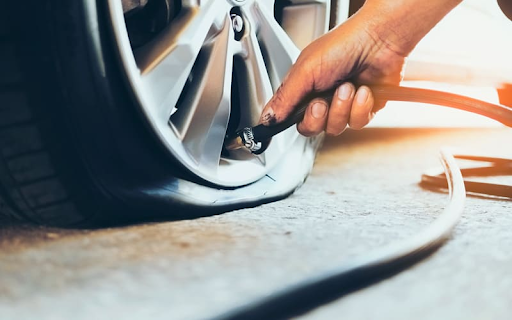While tyre punctures are a common occurrence for drivers, many can be prevented by careful driving and parking, and they can be repaired quickly and safely with the right tools.
The most common cause of having tyres puncture repair is when glass or other sharp items pierce the tyre. Additional puncture reasons are listed below, along with advice on how to prevent each:
Damage to the valve stem
Damage to the valve stem, which is the teeny tyre protrusion used to pump air into your tyre. It lets air out when it becomes clogged, loose, rusted, or damaged. When inspecting your tyres, examine the valve stem and make any necessary repairs or replacements.
Worn tyres
Check your tyres for wear, as this can cause major accidents by increasing the risk of punctures, a rapid loss of inflated, and longer stopping distances.
Tyre bead leaks
Leaks along the circle of the tyre bead, which is the edge of the tyre that rests on the rim, resulting in a flat tyre. If you think there might be a leak, spray soapy water on your wheels. If bubbles start to appear, check with tyres picture repair specialists to verify if you have a puncture or not.
Vandalism
To avoid vandalism and thieves deflating your tyres, park your automobile in a secure location.
Tyre and rim separation due to collision
A collision causes this separation. This gradually depletes the tyres’ air over time, and only a skilled tyre technician can fix it.
Tyres are inflated too high
This excessive tyre pressure is hazardous. At worst, it may result in an abrupt loss of inflation pressure, and at best, it may cause tyres to become rigid and taught, making them more prone to punctures if you drive over a pothole.
Road dangers
Be cautious when driving and try to stay away from potholes, incredibly uneven pavement, and debris (including glass and nails), which can all harm your car’s axles, wheels, and undercarriage.
How to Know If You’ve Been Punctured
The depth of the penetration and the type of damage determine how serious a tyre puncture repair is. The following signs of a tyre puncture include:
- Tyre pressure loss
- Immediate deflation of tyres
- Wheels swaying or trembling
- Having trouble steering your automobile
- The left or right side of the car appears to be being dragged in that direction.
Ignoring these signs may result in unnecessary tyre damage and component disintegration. More significantly, by remaining stranded, you might endanger both you and the other passengers.
How to Respond to a Puncture
A tyre sealant should be kept in your car. Be aware that your tyre puncture repair kit is unlikely to work if the tear is wider than 4mm.
Follow these measures if you think you have a puncture and turn off the road softly and safely:
- Put the handbrake on your automobile and come to a complete stop many metres from any oncoming traffic.
- Show passengers where to go after exiting the vehicle.
- Get your tyre sealant out of the trunk (and compressor, should you have one).
- Discover the hole
- Use the spare tyre to replace the damaged one.
- Never remove a nail or piece of glass from a tyre since doing so will make the hole wider.
- Use the sealant according to the directions if you need to fix your tyre on the side of the road because the mechanisms in these repair kits differ.
- Check to see if your car is in neutral after fixing your tyre, then turn on your compressor and start the engine.
- Set the tire’s PSI/Bar to the amount specified in your vehicle’s manual.
- Don’t go faster than the top speed indicated in the car’s manual and on the repair kit when you take off.
A tyre that has been fixed with a tyre puncture repair service provider is just intended to let you get to a safe location temporarily.

